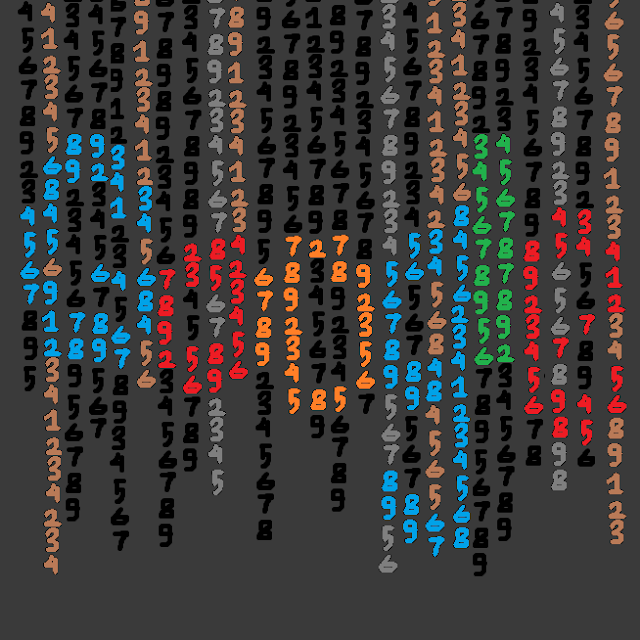Top 10 Instruments in Music - Data-Driven Rankings and Timeless Appeal - Blog No. 73
Music is the pulse of human expression, and instruments are its heartbeat. From the thrum of ancient drums to the digital pulse of modern synths, musical instruments have evolved with humanity—each one telling a story, stirring emotions, and creating soundscapes that echo across generations. But which instruments dominate the global stage today? Which ones are shaping how we experience music in 2025?
To answer that, we’ve blended storytelling with data. Using global sales statistics, Google Trends, streaming analytics, and music school enrollment data, we’ve ranked the top 10 instruments in music today—by popularity, cultural impact, and digital presence.
Related
The Art of Music Transcribing - Unlocking the Secrets of Sound - Blog No. 31
📊 Top 10 Most Popular Instruments in 2025
| Rank | Instrument | Global Google Search Volume (2024) | Estimated Global Sales (Units) | Key Genre Associations | Notable Artists |
|---|---|---|---|---|---|
| 1 | Guitar | 4.1 million/month | 16 million | Rock, Pop, Folk, Country | Jimi Hendrix, Ed Sheeran, Taylor Swift |
| 2 | Piano/Keyboard | 3.5 million/month | 12 million | Classical, Pop, Jazz | Beethoven, Alicia Keys, Yiruma |
| 3 | Violin | 2.8 million/month | 6 million | Classical, Folk, Film Scores | Lindsey Stirling, Itzhak Perlman |
| 4 | Drums | 2.2 million/month | 9 million | Rock, Jazz, Pop, Hip-Hop | Travis Barker, Dave Grohl, Questlove |
| 5 | Flute | 1.6 million/month | 5 million | Classical, World Music, Jazz | James Galway, Jeanne Baxtresser |
| 6 | Saxophone | 1.4 million/month | 4.5 million | Jazz, Pop, Funk, R&B | John Coltrane, Kenny G |
| 7 | Trumpet | 1.1 million/month | 3.8 million | Jazz, Classical, Marching Bands | Miles Davis, Louis Armstrong |
| 8 | Ukulele | 950K/month | 5.5 million | Indie, Folk, Pop | Israel Kamakawiwo'ole, Grace VanderWaal |
| 9 | Cello | 800K/month | 2.5 million | Classical, Film Scores | Yo-Yo Ma, Hauser (2Cellos) |
| 10 | Synthesizer | 750K/month | 3 million | EDM, Pop, Synthwave | Deadmau5, Jean-Michel Jarre, Daft Punk |
Data Sources: Google Trends (2024), Statista, Reverb Music Marketplace, Music Trades Report, NAMM Global Music Instrument Census 2024
🎸 1. Guitar: The People’s Instrument
The guitar is the undisputed king of modern music. Portable, expressive, and versatile, it’s been the voice of rebellion, romance, and rhythm for over a century.
From Hendrix lighting his guitar on fire at Woodstock to TikTokers fingerpicking soulful ballads in their bedrooms, the guitar transcends time.
Why it’s #1:
-
The most searched musical instrument globally.
-
Leads in unit sales every year since 2000.
-
Huge in rock, pop, folk, and country.
Fun Fact: During the pandemic, Fender’s online guitar lessons saw a 600% increase in traffic, with millennials and Gen Z driving the trend.
🎹 2. Piano/Keyboard: The Composer’s Playground
Whether it’s an elegant grand piano or a portable digital keyboard, this instrument has long been the heartbeat of musical composition.
From Mozart to Billie Eilish, the piano bridges eras. It’s also the first instrument for many aspiring musicians due to its wide musical range.
Why it’s #2:
-
Second-highest in global search and sales.
-
Dominates in classical and jazz education.
-
Versatile for solo and ensemble performances.
Fun Fact: In 2024, Yamaha sold over 4.2 million keyboards, a 9% increase from the previous year, driven largely by the rise of online piano tutorials on YouTube.
🎻 3. Violin: The Emotional Voice of Strings
Delicate yet powerful, the violin is a staple in orchestras and a rising star in modern music, thanks to crossover artists like Lindsey Stirling.
It’s often called the most expressive instrument, mimicking the human voice more closely than any other.
Why it’s #3:
-
Strong classical and cinematic presence.
-
High enrollment in youth orchestras.
-
Popular in both Western and Eastern music traditions.
Data Insight: According to the ABRSM (Associated Board of the Royal Schools of Music), violin is the second-most studied classical instrument worldwide, behind only the piano.
🥁 4. Drums: The Backbone of Rhythm
Every band needs a heartbeat—and that’s where drums come in. From jazz improvisation to EDM drops, percussion drives the groove.
Drumming is also therapeutic. A 2023 study by Johns Hopkins found that regular drumming can reduce anxiety by up to 35%.
Why it’s #4:
-
High sales due to both acoustic and electronic kits.
-
Dominant in rock, hip-hop, and jazz.
-
Essential in live and studio performance.
Fun Fact: Roland’s V-Drums electronic kits sold nearly 1 million units in 2024, particularly popular among apartment dwellers and digital creators.
🎶 5. Flute: The Oldest Melody
The flute, dating back over 40,000 years, might be the oldest musical instrument still in regular use. Its airy, ethereal tone is central to classical and folk music.
Today, it’s also trending in world music and fusion genres, thanks to artists incorporating traditional elements with electronic backing.
Why it’s #5:
-
Most studied wind instrument globally.
-
Frequently featured in school music programs.
-
Strong presence in orchestras and global folk styles.
Cultural Highlight: The bansuri, India’s version of the flute, is making waves in lo-fi and ambient music playlists on Spotify.
🎷 6. Saxophone: The Sound of Soul
Invented in the 1840s, the saxophone has become synonymous with jazz, soul, and smooth vibes. Its sultry tone adds depth and emotion to almost any genre.
Why it’s #6:
-
Massive impact on jazz, funk, and pop.
-
Easily recognizable tone.
-
Popular in academic and live music settings.
Artist Impact: Kenny G holds the Guinness World Record for the longest note held on a saxophone—45 minutes and 47 seconds using circular breathing.
🎺 7. Trumpet: The Herald of Power
Whether signaling a king’s arrival or lighting up a jazz club, the trumpet’s bold sound is unmistakable. It’s one of the oldest brass instruments and still commands respect.
Why it’s #7:
-
Core instrument in jazz and marching bands.
-
Wide historical and cultural use.
-
Easy to transport and affordable to start.
Data Insight: In the U.S., over 180,000 trumpet students are enrolled annually across school music programs, making it the top brass choice.
🌺 8. Ukulele: The Island Star
The ukulele may look like a toy, but its cheerful tones have made it a serious player in modern music. Easy to learn and easy to love, it's become a YouTube sensation.
Why it’s #8:
-
Most beginner-friendly string instrument.
-
High online popularity—over 4.5 million #ukulele TikToks.
-
Great for travel, songwriting, and content creation.
Trend: In 2024, Amazon reported a 22% increase in ukulele sales, largely driven by social media tutorials and acoustic covers.
🎻 9. Cello: The Soulful Giant
The cello resonates with a deep, human-like voice, often said to reflect the closest range to the human vocal cords. It’s a vital part of orchestras and film scores.
Why it’s #9:
-
Popular in modern neo-classical music.
-
High growth in student musicianship.
-
Crossovers with pop (e.g., 2Cellos, Apocalyptica).
Cultural Impact: Streaming platforms like Spotify report a 23% year-over-year increase in instrumental and cello-based playlist listens since 2023.
🎛️ 10. Synthesizer: The Future of Sound
No modern soundscape is complete without the synthesizer. From the rise of synthpop in the ‘80s to today's EDM and cinematic scores, it’s revolutionized how we create music.
Why it’s #10:
-
Central to electronic and experimental genres.
-
Used by producers, DJs, and film composers.
-
Major boom due to DAWs (Digital Audio Workstations).
Streaming Stats: Over 40% of Spotify’s Top 100 in 2024 featured synth-based hooks or production.
Related
🎯 Conclusion: Instruments That Shape the Sound of Today
These top 10 instruments aren’t just tools—they’re storytellers. Each one plays a unique role in shaping the global music narrative. Whether it’s a kid plucking their first guitar chord, a DJ looping synth beats in Berlin, or a flutist performing in a sacred ceremony—these instruments connect us all.
As music continues to evolve with AI and digital platforms, the core essence remains rooted in these instruments—timeless, soulful, and ever-evolving.



Comments
Post a Comment